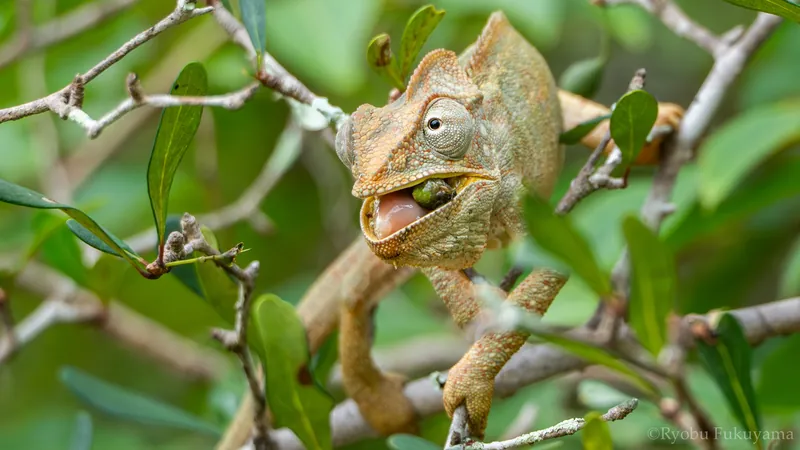
Unseen Heroes: How Madagascar's Lizards Are Key to Forest Survival
2025-06-09
Author: Sophie
Madagascar, the enchanting island that broke away from India 88 million years ago, boasts some of the most extraordinary biodiversity on the planet, with flora and fauna unlike any other. This isolation allowed its unique ecosystems to blossom, creating a haven for wildlife.
Lizards: The Unsung Seed Dispersers
While birds and mammals often take center stage as vital seed dispersers, lizards have been left in the shadows. However, researchers from Kyoto University are now shining a light on these overlooked reptiles, revealing their significant contribution to the ecological process known as endozoochory—where animals eat seeds and disperse them through their waste.
Curiously, fewer than 10% of lizard species are known to eat fruits. Yet, those that do are crucial, with some stepping up as primary seed dispersers for certain plants. "Lizards are under-appreciated as seed dispersers in many forest ecosystems," says Ryobu Fukuyama, one of the study's authors. This research aims to elevate the lizard's status in the ecological hierarchy.
Groundbreaking Research in Madagascar's Dry Forests
Published in the journal Biotropica, the team investigated three lizard species in Madagascar's tropical dry forests: the Malagasy Giant Chameleon, Cuvier's Madagascar Swift, and Western Girdled Lizard. These omnivores were previously unstudied regarding their fruit consumption.
The findings were groundbreaking: these lizards feasted on fruits from over 20 different plant species, dispersing viable seeds in their droppings. This is significant—many of these plant species differ from those typically consumed by the Common Brown Lemur, the forest's usual seed disperser, suggesting that lizards could be playing a more pivotal role in the ecosystem.
A Ray of Hope Amid Environmental Decline
But the importance of this research transcends mere academic interest. Madagascar's forests are under siege from environmental degradation caused by human activities, often rendering them inhospitable to larger seed dispersers like lemurs. Unlike these frugivores, the lizard species studied are resilient and can thrive in degraded environments.
By serving as seed dispersers, these lizards could play a key role in regenerating the forests, yet many questions remain about their full capacity and the future of these unique ecosystems. As we uncover the vital roles of lizards, we might find that these small creatures carry the weight of Madagascar’s ecological future on their tiny shoulders.









 Brasil (PT)
Brasil (PT)
 Canada (EN)
Canada (EN)
 Chile (ES)
Chile (ES)
 Česko (CS)
Česko (CS)
 대한민국 (KO)
대한민국 (KO)
 España (ES)
España (ES)
 France (FR)
France (FR)
 Hong Kong (EN)
Hong Kong (EN)
 Italia (IT)
Italia (IT)
 日本 (JA)
日本 (JA)
 Magyarország (HU)
Magyarország (HU)
 Norge (NO)
Norge (NO)
 Polska (PL)
Polska (PL)
 Schweiz (DE)
Schweiz (DE)
 Singapore (EN)
Singapore (EN)
 Sverige (SV)
Sverige (SV)
 Suomi (FI)
Suomi (FI)
 Türkiye (TR)
Türkiye (TR)
 الإمارات العربية المتحدة (AR)
الإمارات العربية المتحدة (AR)